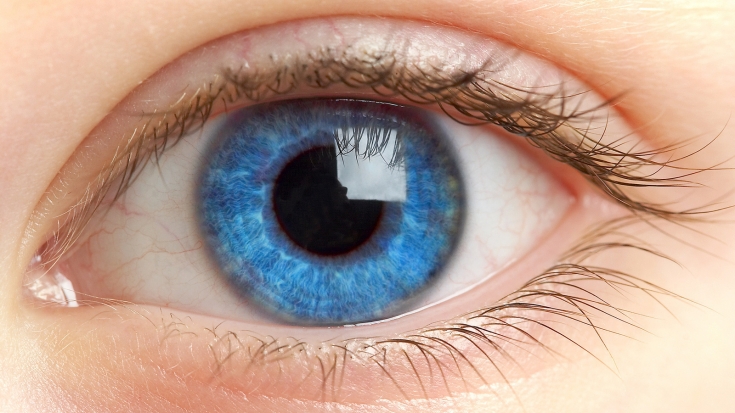Blepharitis, i.e. inflammation of the eyelid, causes unpleasant pain in the eye area. Redness and swelling of the eyelid may indicate the presence of this unpleasant disease, which can occur repeatedly and cause a lot of trouble to the patient. It can be caused both by a disease of an independent nature, and be a sign of the development of ocular pathology, emphasizes estet-portal.com. If measures are not taken in time, it easily becomes chronic and then it is much more difficult to get rid of it.
What is blepharitis and its types
Blepharitis – this is inflammation of the eyelid, which is accompanied by a feeling of sand in the eyes and soreness. As a rule, this disease affects the edges of the eyelids. Blepharitis is not a serious condition, but it is very troublesome and is usually chronic.
Blepharitis most commonly affects both eyes. It can be caused by bacteria, fungal infections, mites.
It is also defined as a consequence of an allergic reaction, anemia, diabetes, tuberculosis, infectious diseases, etc.
There are three main types of blepharitis:
- staphylococcal blepharitis,
- seborrheic blepharitis,
- meibomian blepharitis.
Accordingly, the causes of each type of disease are also different.
Why does staphylococcal blepharitis occur
This type of blepharitis is caused by the bacterium – staphylococcus. As a rule, such bacteria live in small numbers on human skin without causing any problems. However, at some point in some people, staphylococci become active, causing blepharitis. This type of blepharitis is based on the base of the eyelashes, affecting this area of the eyelid. In the most severe cases, this infection may be accompanied by an abscess of the ciliary follicle. Factors for the development of staphylococcus are often:
- weakening of immunity,
- infections of various etiologies,
- dysbacteriosis.
Development of seborrheic blepharitis
Seborrheic blepharitis is closely related to a skin condition called seborrheic dermatitis that causes the skin to become oily and scaly. However, seborrheic dermatitis is not contagious and therefore cannot be contracted. The yeast-like fungus Malasseziafurfur, which also lives in the skin of 90% of people, under certain conditions causes an inflammatory reaction, which leads to blepharitis. This disease is often combined with seborrheic dermatitis of the skin on the head, eyebrows, in the area behind the ears. During the disease, there may be a partial loss of the ciliary row.
Manifestations of meibomian blepharitis
Meibomian blepharitis is also known as dysfunction of the meibomian glands, which are located in the eyelids behind a person's eyelashes. There are 25-30 meibomian glands in each lower and upper eyelid. They produce a small amount of oily fluid that forms part of the tear film that protects the front of the eye. It is believed that in people with meibomian blepharitis, the function of these glands is impaired, which can lead to inflammation of the eyelid. This also explains the dryness of the eyes in blepharitis.
In practice, it is often very difficult to distinguish between the above types of blepharitis. In fact, seborrheic blepharitis often occurs along with meibomian blepharitis. Also, inflamed skin is prone to infection with staphylococcus aureus. Therefore, all three causes can be involved in the development of blepharitis. Therefore, treatment is prescribed depending on the symptoms of blepharitis.
The main symptoms of blepharitis
The main symptoms of blepharitis include loss of eyelashes in the affected area, sensitivity to bright light, fatigue, and also:
- pain in both eyelids;
- Sensation of sand in the eyes, itching or burning;
- inflamed or oily eyes;
- sticking together in the morning;
- appearance of small dandruff-like scales on the eyelids;
- crusting at the base of the eyelashes.
The symptoms of blepharitis can appear periodically, change and disappear altogether. Therefore, the treatment of blepharitis is best done when the symptoms are more pronounced. There are other diseases that are usually associated with blepharitis:
- keratitis sicca (dry eyes);
- seborrheic dermatitis;
- rosacea.
Read also: How to get rid of hernias under the eyes?
 Blepharitis Treatment Recommendations
Blepharitis Treatment Recommendations
Blepharitis Treatment – the process is rather long than fast, because in case of non-compliance with the treatment schedule, inflammation appears again and again. However, with regular treatment of blepharitis, symptoms tend to be minimized. This helps prevent flare-ups.
The most basic part of treating blepharitis is regular eyelid hygiene. However, the doctor may also prescribe antibiotics, eye drops, and appropriate treatment for the underlying conditions of blepharitis.
In their treatment, emphasis is placed on:
- immunity boost,
- vitamin therapy,
- adjustment of the power system,
- elimination of pathological processes.
Antimicrobial and antiparasitic agents in the form of drops, ointments, etc. may also be prescribed.
Estet-portal reminds that self-medication is dangerous for health. Therefore, to find out the cause of inflammation of the eyelids, it is necessary to consult a doctor. The specialist, after carrying out all the necessary diagnostic tests, will prescribe the necessary treatment and give recommendations on the proper care of the eyelids.






Add a comment